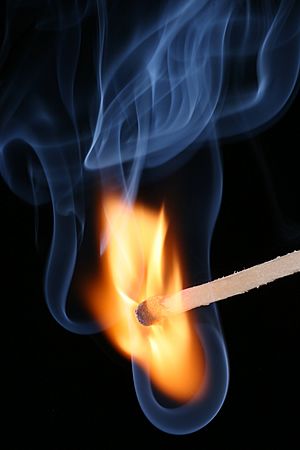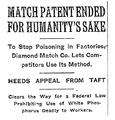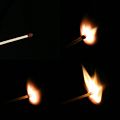Match facts for kids
A match is a handy tool used to make fire in a controlled way. Most matches are small sticks made of wood or stiff paper. One end of the match, called the "match head," is covered with a special material. This material can light up when you rub it against a rough surface. The match head usually contains chemicals like phosphorus or phosphorus sesquisulfide, held together by a substance called gelatin.
Matches are sold in packs, either in a small box or in matchbooks. There are two main kinds of matches:
- Safety matches can only be lit by striking them against a special strip found on the matchbox.
- Strike-anywhere matches can be lit by rubbing them against almost any rough surface.
There are also electric matches, which use electricity to create fire instead of friction.
Contents
History of Matches
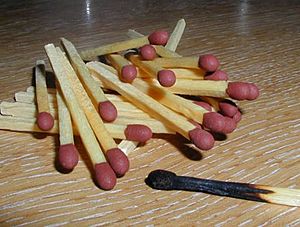
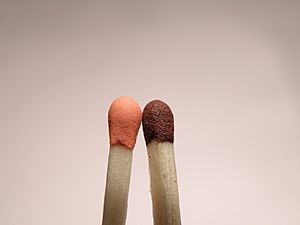
People have used simple forms of matches for a very long time. In ancient Rome, around the year 1530, there were mentions of matches that used sulfur. These were called sulphurata.
The first modern match that could light itself was invented in 1805. It was created by K. Chancel, who worked with Professor Louis Jacques Thénard in Paris. The head of these early matches was made from a mix of chemicals like potassium chlorate, sulfur, sugar, and rubber. To light them, you had to dip the match tip into a small bottle filled with a strong acid called sulfuric acid. These matches were very expensive and also quite dangerous to use. Because of this, Chancel's matches never became very popular.
Special Kinds of Matches
Some matches are made for specific uses, especially in tough conditions.
Storm Matches
Storm matches, sometimes called lifeboat matches or flare matches, are designed to keep burning even in strong winds. They have a tip that lights easily, just like a regular match. However, a large part of the stick is covered with a special material that burns for a long time. These matches also have a wax coating, which makes them waterproof. They are often included in survival kits because they are so reliable.
Bengal Matches
Bengal matches are like small, handheld fireworks, similar to sparklers. They look a bit like storm matches. But the material on their stick contains special chemicals, like strontium or barium. These chemicals make the flame burn in a bright red or green color.
Related pages
- The Little Match Girl
- A site demonstrating jet propulsion using matches and foil
Images for kids
-
The Alchemist in Search of the Philosophers Stone (1771), by Joseph Wright, showing Hennig Brand discovering phosphorus.
-
A tin "Congreves" matchbox (1827), made by John Walker, who invented the friction match.
-
A report from The New York Times dated January 29, 1911.
-
An old match factory in Itkonniemi, Kuopio, Finland.
-
Super Deportistas matches from mid-20th century Mexico. These are part of the collection at the Museo del Objeto del Objeto in Mexico City.
See also
 In Spanish: Fósforo (utensilio) para niños
In Spanish: Fósforo (utensilio) para niños


